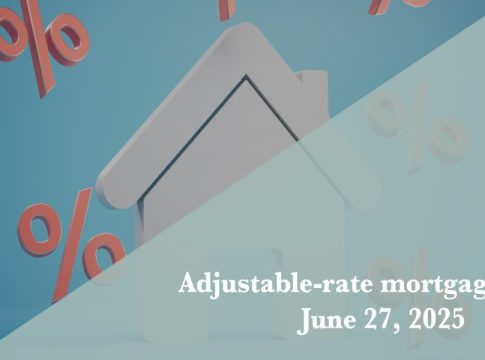Exploring Adjustable-Rate Mortgages: Are They Right for You?
The housing market can be complex, especially when navigating mortgage options. Currently, the average rate for 5-year adjustable-rate mortgages (ARMs) is about 7.60%, as reported by Zillow. If you’re considering an ARM—whether for buying your home or as an investment property—let’s break down how these loans function and when they might be beneficial.
Fixed vs. Adjustable-Rate Mortgages
Fixed-rate mortgages dominate the market, making up about 92% of all U.S. mortgages. They provide the reassurance of a stable interest rate for the life of the loan. This reliability is a big draw for many homeowners.
However, ARMs, while less popular, can offer advantages. Only around 8% of borrowers choose ARMs, but for some, especially those with specific needs, they can be a smarter choice.
Who Benefits from ARMs?
1. Short-Term Homeowners
If you plan on moving in a few years, an ARM can save you money with its low initial rate. Just ensure that your timeline for moving is realistic before committing to this option.
2. Property Investors
Investors often take advantage of ARMs to secure lower rates, allowing them to potentially sell homes or increase rent before the more significant adjustments happen.
3. Buyers in High-Interest Environments
When interest rates are high, ARMs may offer lower initial rates and could potentially decline if market conditions improve.
Understanding How ARMs Work
An adjustable-rate mortgage generally starts with a fixed interest rate for a set period—typically between 3 to 10 years. After this period, rates can fluctuate based on variables like:
-
Benchmark indices: Your ARM’s rate may be tied to an index, often the Secured Overnight Financing Rate (SOFR), which reflects banks’ borrowing costs.
-
Lender Margins: This is a fixed percentage added to the benchmark rate, often between 2% to 3.5%, which varies by lender and your credit profile.
- Rate Caps: These limits control how much your rate can rise at each adjustment or over the life of the loan.
Common ARM structures include the 5/1 ARM (fixed for five years, then annual adjustments) and the 10/6 ARM (fixed for ten years, with adjustments every six months).
Refinancing: When an ARM Is No Longer Right
Life is unpredictable. If you secure an ARM but later realize you want to stay long-term in your home, refinancing to a fixed-rate mortgage could be beneficial. This process is similar to refinancing any loan—shop around for better rates, gather your documents, and make the switch.
Pros and Cons of Adjustable-Rate Mortgages
Like any financial product, ARMs have their strengths and weaknesses. Here’s a quick overview:
Pros
- Lower Initial Rates: ARMs often start with lower rates compared to fixed-rate mortgages.
- Potential for Reduced Payments: If market rates drop, you may benefit from lower payments.
- Easier Qualification: Some borrowers find qualifying for ARMs less stringent.
Cons
- Payment Increases: After the fixed period, your payments may rise sharply.
- Complex Comparisons: Understanding and comparing different ARM offers can be more complicated than their fixed-rate counterparts.
- Less Certainty: ARMs lack the predictability that fixed-rate mortgages provide.
In conclusion, when considering an ARM, it’s essential to weigh both the advantages and the risks. Consult with a financial expert to determine the best path for your circumstances. With the right knowledge, you can navigate the mortgage landscape confidently and make the best choice for your financial future.

Writes about personal finance, side hustles, gadgets, and tech innovation.
Bio: Priya specializes in making complex financial and tech topics easy to digest, with experience in fintech and consumer reviews.

